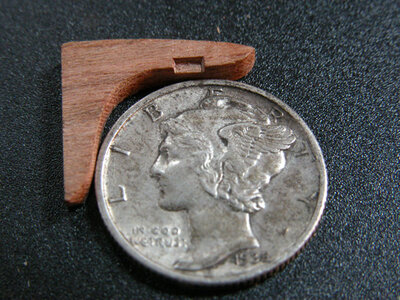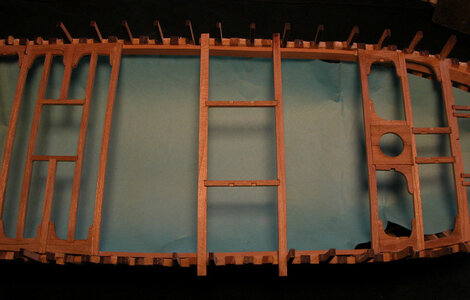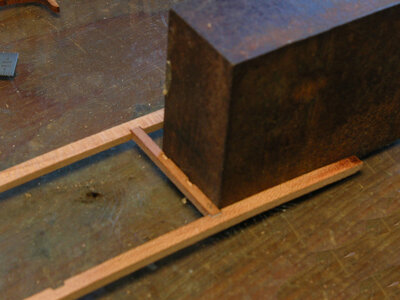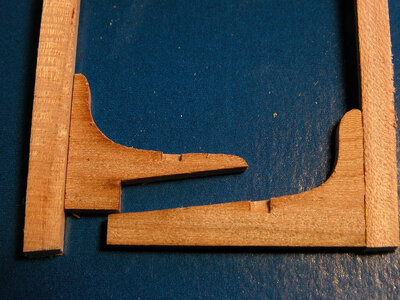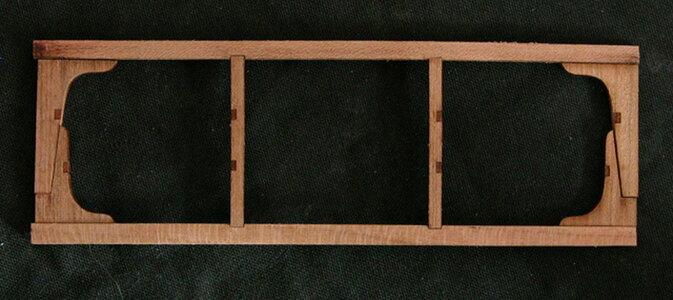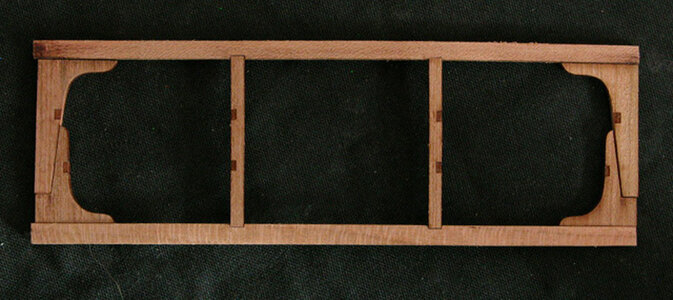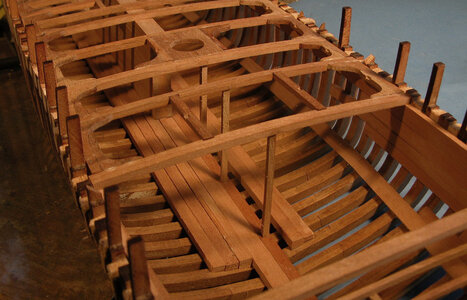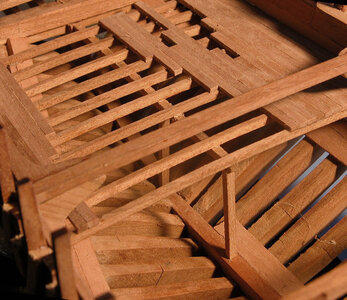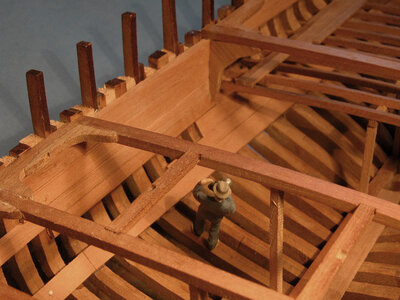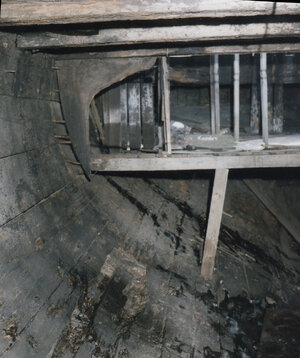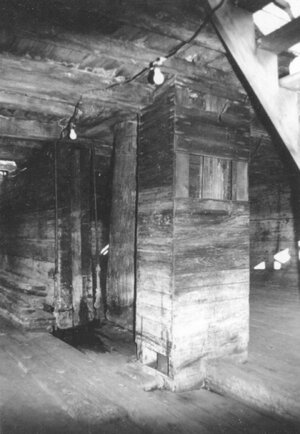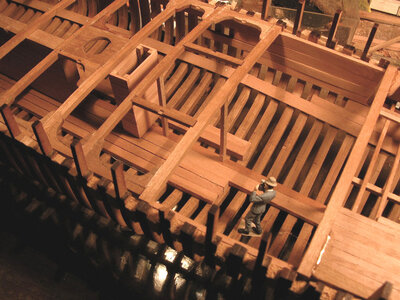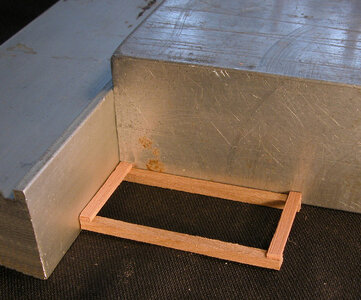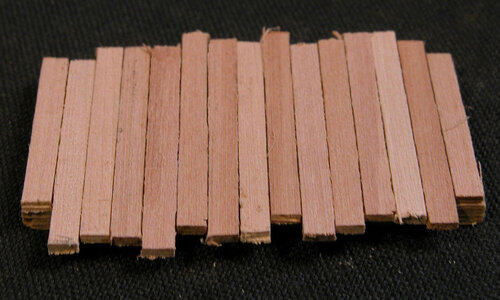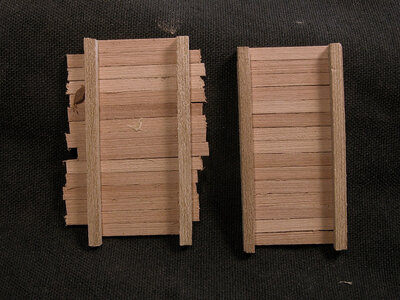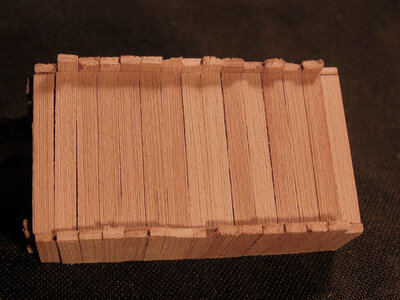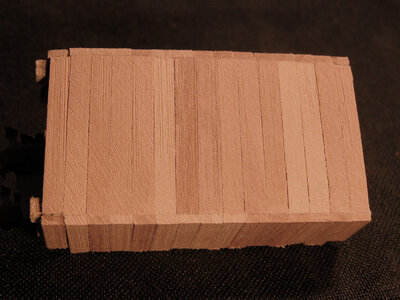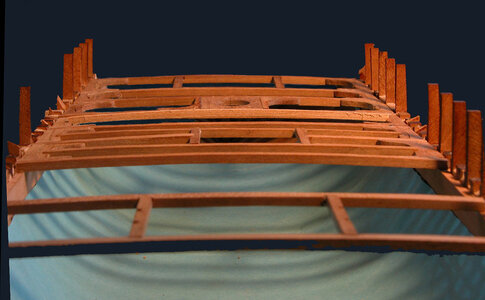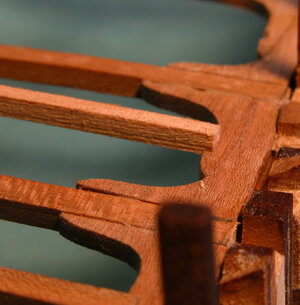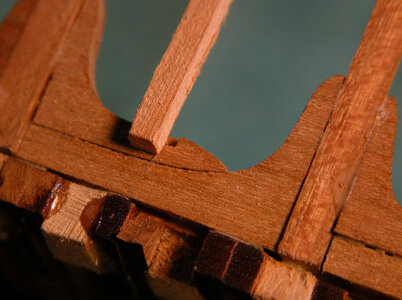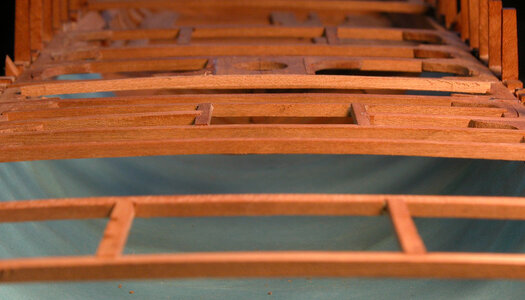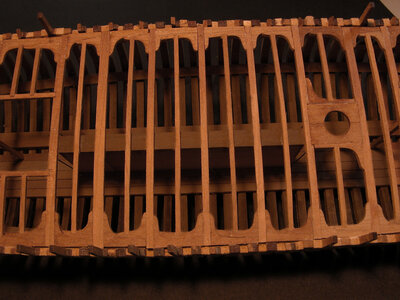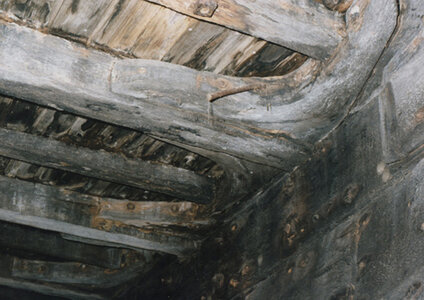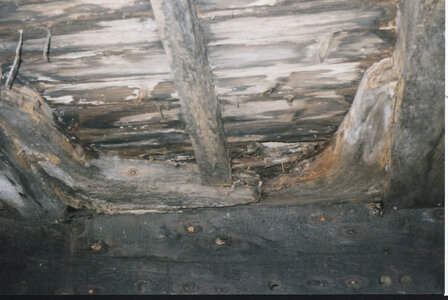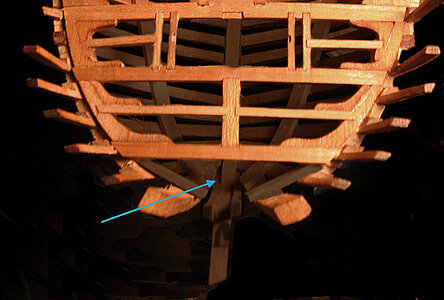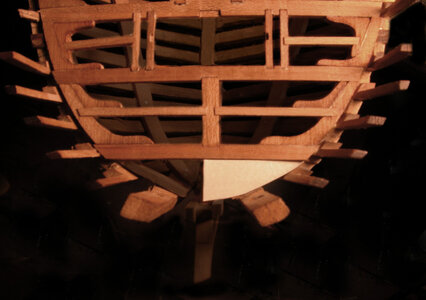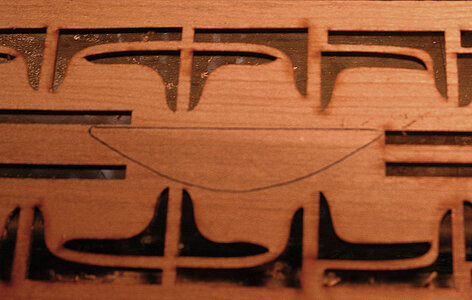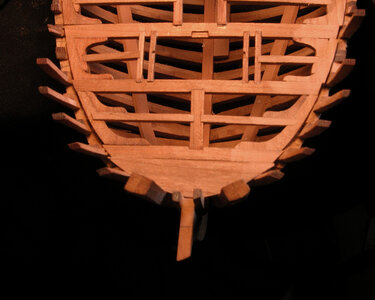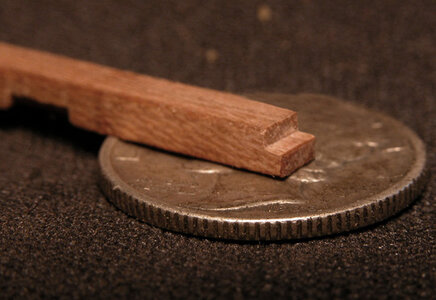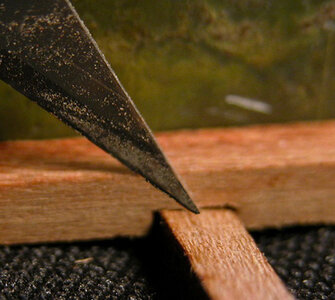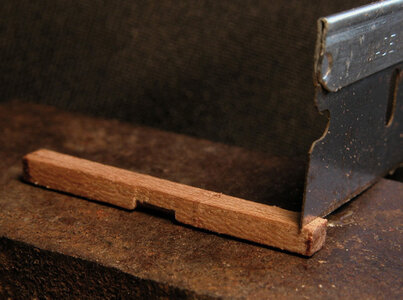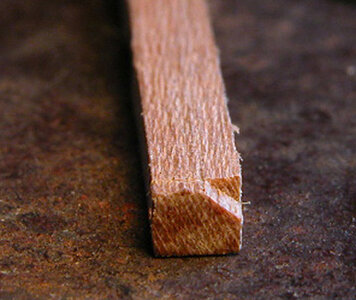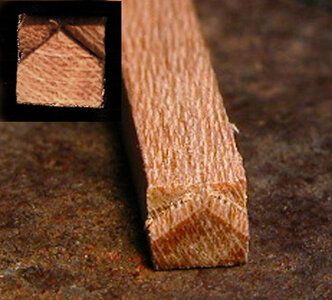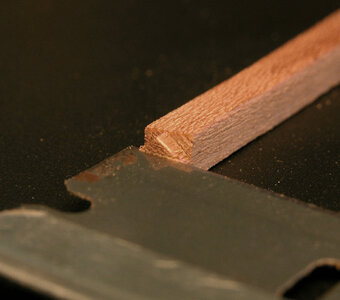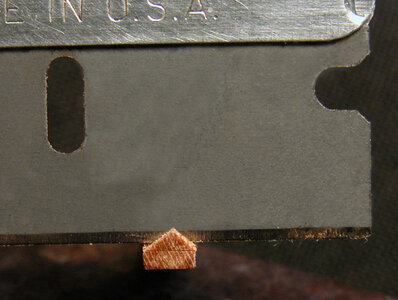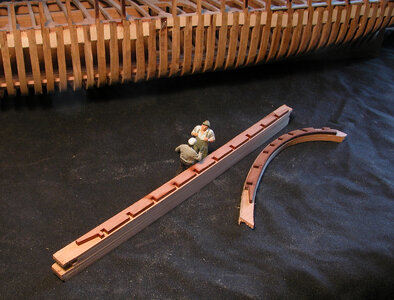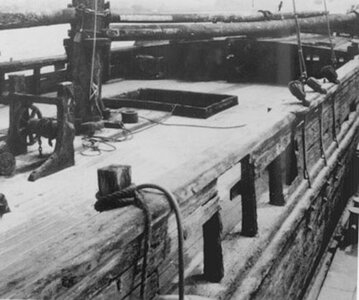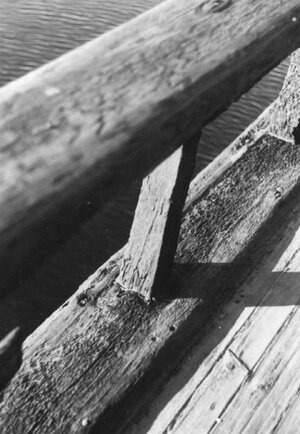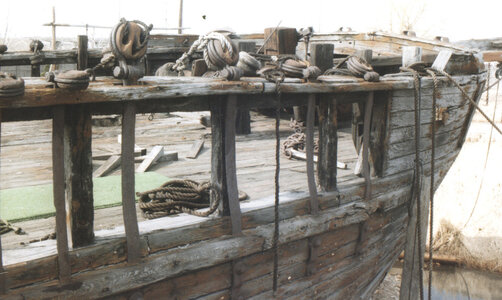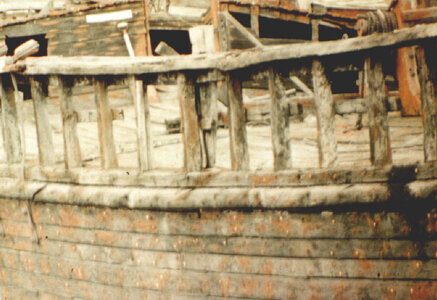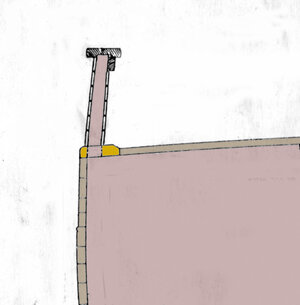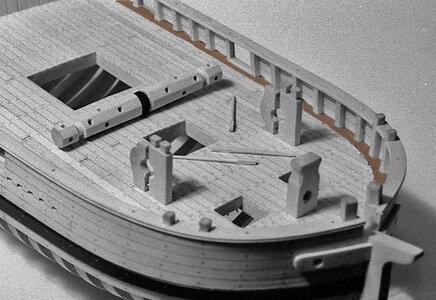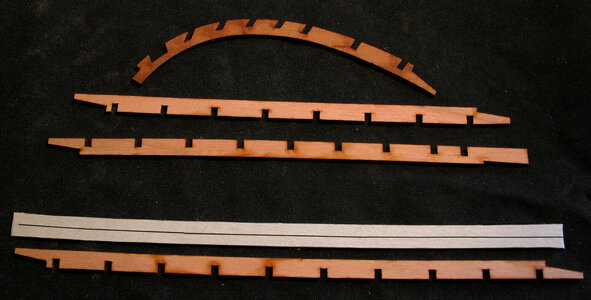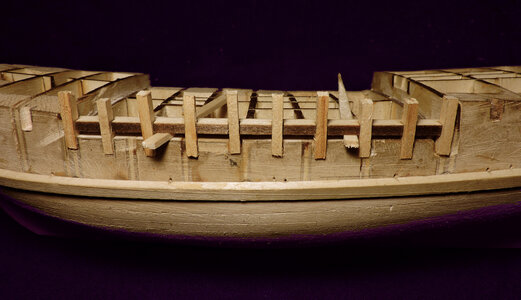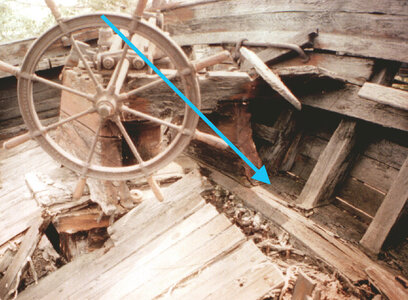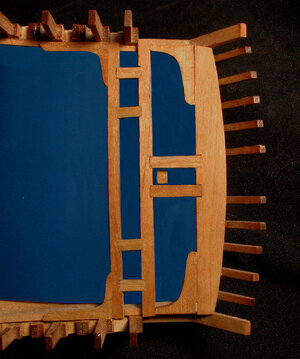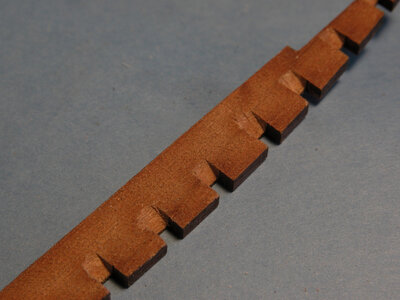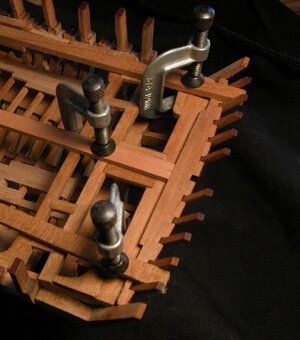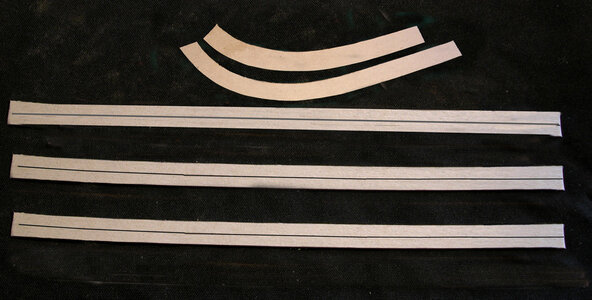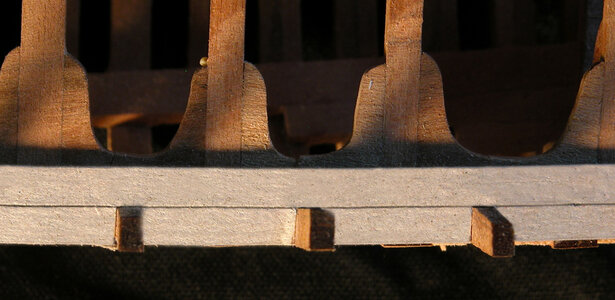After building the deck there were a lot of notches and knees to cut and fit so before i move on with the build here is a little how to
i laser cut generic knees shapes and took those shapes and worked them into the deck structure. To begin it is best to hold the knees in a spring clamp or small vise while they are being cleaned of the laser char and shaped. I will use a round file, a half round and an exacto knife as a final scraping to do the job. It depends on the curve of the knee being cleaned as to which tool I will use.
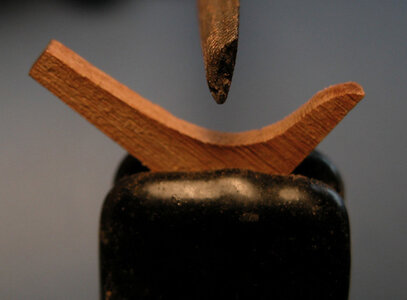
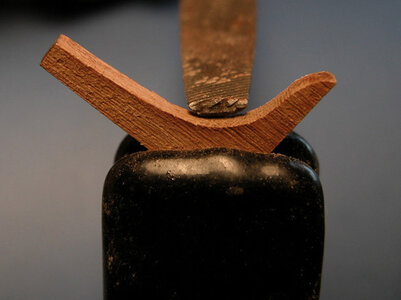
when i did the drawings and layed out the deck i laser etched the location of the ledge notches. all i needed to do was to cut them to the proper depth. There is a simple 7 cut method of cutting notches. Once you cut a few they become quite easy to do, the model has a lot to do and you will become proficient in no time at all.
Cuts one and two can be done either with a single edge razor blade or a blunt pointed Exacto knife. After cutting enough notches you will end up with the tips of Exacto blades broken off, save these they make great scrapers and for making blind cuts. Make the end cuts by pressing down on the knife until the cut is about half way down the thickness of the knee. If you don’t cut to the half way point, don’t worry, you can go back and trim the cut deeper.
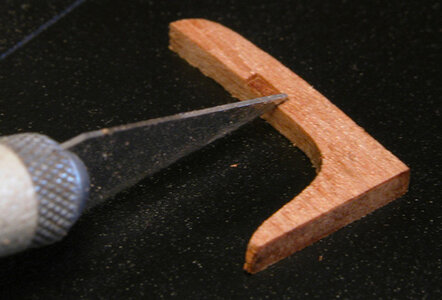
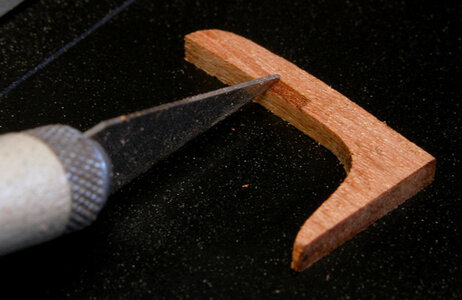
Cuts three and four are stabbing cuts made from the corners to the center of the notch. Here is where you end up breaking blade tips and collecting blunt ended blades for other uses. There is no need to “cut” along the back edge; by just stabbing the blade into the notch you will have enough of a cut.
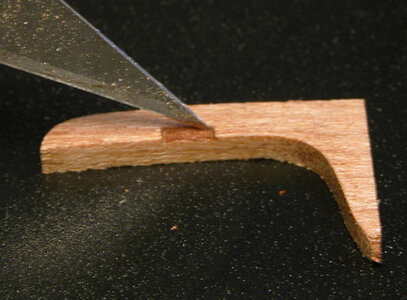
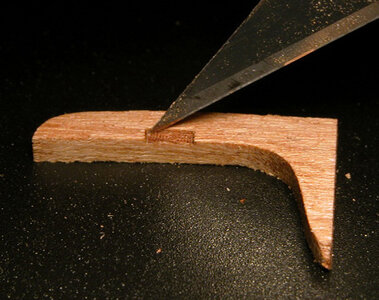
Cuts five and six start at the center of the notch and cut downward to the side of the notch. For the first few notches it is better to take a couple shallow cuts rather than trying to make one deep cut. You may end up chipping the corners off.
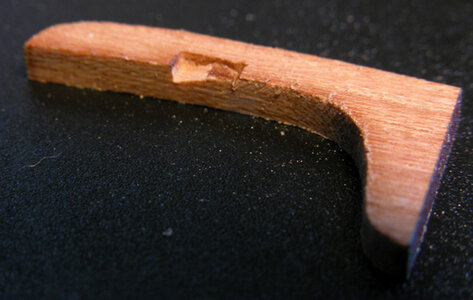
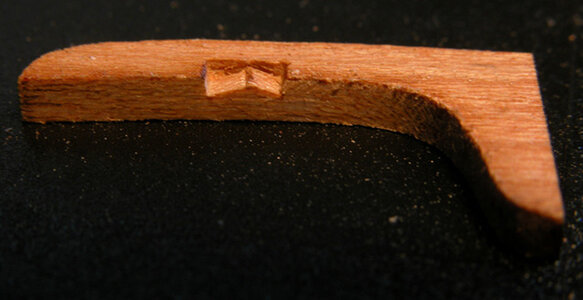
The final seventh cut is a vertical cut from corner to corner. This cut goes along the grain and is quite easy to do. The idea is to cut out the triangle piece left from cuts five and six. As a precaution you might want to take a cut along the back of the notch before you make the final vertical cut.
A little trimming or clean up of the notch may be necessary. Once you get the hang of it you can make clean notches in a matter of a minute or two.
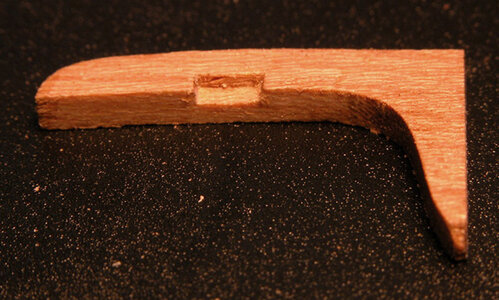
the knees and notches are small even at 1:48 scale
